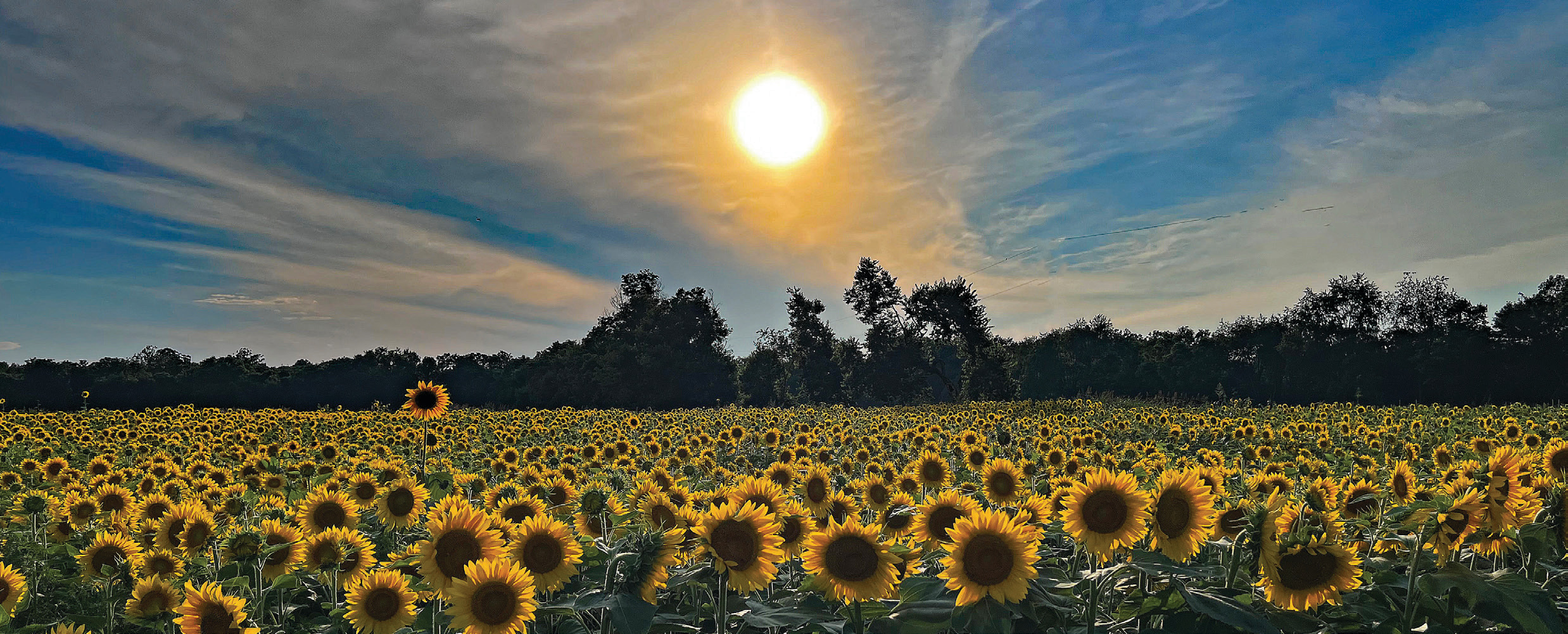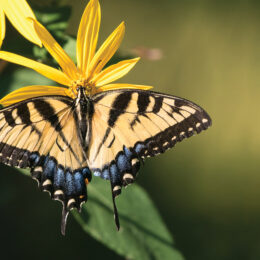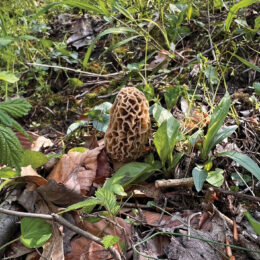
BY MIKE LUNSFORD
One of the best reasons to visit a field of sunflowers is for the way it sounds. The inescapable beauty of such a place attracts gawkers and admirers of all kinds who create a contented hum that can be found nowhere else.
We are in the season for sunflowers, which mature for backyard gardeners and commercial growers alike by mid-July to early August. Where there is a field of blossoming sunflowers, there is not only an abundance of bees and beetles and birds but plenty of human passersby, those who cruise country roads with open windows, who set up camera tripods, and those drawn by the inevitable social media buzz.
A summer ago, a farmer friend of ours who grows acres of organic sunflowers in Eastern Parke County realized the attraction of his fields. For as long as there was daylight, a steady stream of cars idled past his property on roads typically driven only by the few folks who live along them. They are narrow country lanes, many graveled or mostly patched, with some inexplicable compass point associated with their green road signs, yet they are found as if people are on some sort of hunt for treasure.
At times, my friend grew irritated with the strangers who laid claim to his sunflowers, some who parked in the road and brazenly walked into his fields, others who clipped the heads of particularly pretty flowers, and still others who left their trash behind. Since I fancy myself a photographer, I showed up too, pulling my truck into a grassy ditch on several evenings, and, with his permission, snapped away.
On one occasion, as I stood on the truck’s tailgate with a camera, a wiry pedestrian speed-walked by, out, I suspected, for her usual head-clearing evening exercise. As I turned to see her, a car crept by, its radio turned up louder than it needed to be. She was clearly irritated by the unwelcomed disturbance, and even though I said something pleasant to her about the splendor of the field on that gorgeous summer night, it was obvious that she wasn’t particularly happy to see me there either. I understood that a quiet but pleasant drone near sunflowers could only be heard in near silence.
Members of the aster family and the genus, “helianthus” (a literal Greek translation of their name), sunflowers were cultivated by North American peoples long before Europeans came here. They are not a single flower at all, but 1,000 to 2,000 “florets” bloom in each. Sunflowers attract insect friends and foes alike, the latter a variety of destructive moths and beetles that challenge farmers. The former are beneficial pollinators, from honeybees to hoverflies, ladybugs to lacewings. As far as birds go, goldfinches are sunflower connoisseurs.
In this summer of heat and baked earth, it is a challenge to find a more pleasant place than a sunflower field. If you know of one, take in the splendor of its bright faces and vivid colors. But, just for a moment, close your eyes and listen.
Mike Lunsford is a freelance columnist, feature writer, and photographer, primarily for the Terre Haute Tribune-Star and Terre Haute Living magazine. The author of seven books lives in Parke County with his wife, Joanie. Contact Lunsford at hickory913@gmail.com.



